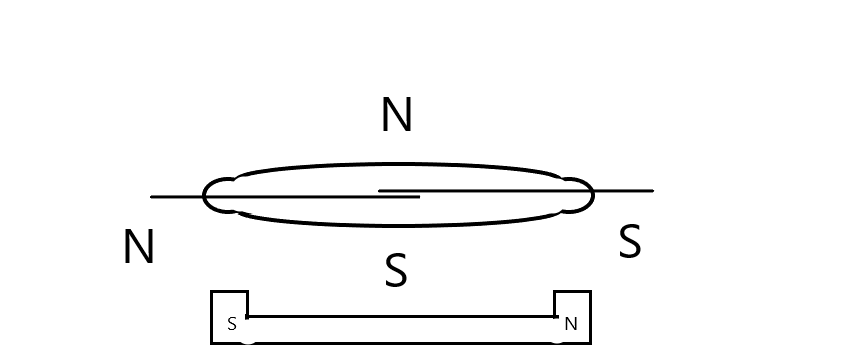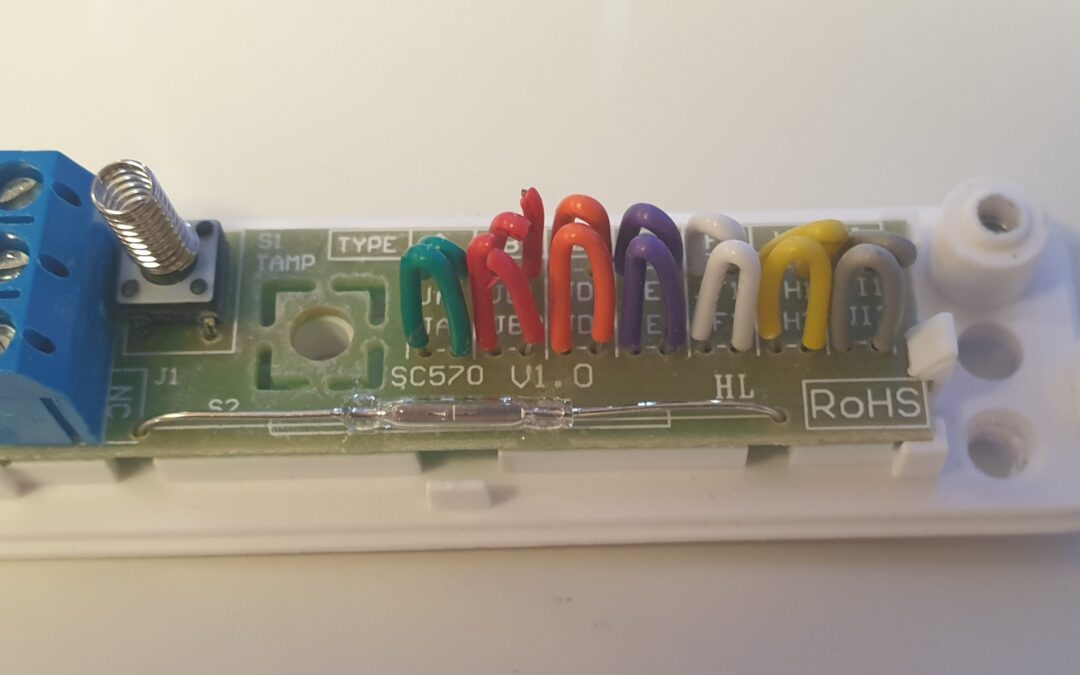Magnetic Reed Switches
The open magnetic reed switch is the most widely used alarm contact. The reed switch is made up of two ferromagnetic reeds that are hermetically sealed inside a glass tube. The reed ends are aligned, with a slight gap between them. When an external magnetic force is supplied, the ends of the reeds assume opposite polarities, and when this force is powerful enough, the tips of the reeds within the tube are mutually attracted and accelerate into contact. Because the reeds are quite springy, the portion returns to normal as soon as the magnetic force is withdrawn. The glass envelope is filled with an inert gas to keep contamination out, and the use of appropriate contact materials results in an extremely long life.

The contacts make very quickly due to the low inertia of the reed blades and the narrow gap between them, with typical operating times of 1,000ths of a second for miniature types and 2,000ths of a second for regular ones. The effect of the contacts on closure causes a millisecond-long phenomenon known as “contact bounce.” This effect grows in proportion to the amount of magnetic force applied, but the operating time decreases.
As most reeds use a “normally closed” circuit which is opening the reed contact and produces an alarm condition – we are more interested in the reed’s behaviour when the magnetic field is absent. Most magnetic devices exhibit hysteresis, which is a type of magnetic inertia. Once the reed switch is closed, it requires less magnetic force to maintain it closed than it did to close it in the first place. In other words, more force is necessary to close the reed blades than to keep them closed once they are in contact.
The mechanical architecture of a reed switch includes; reed material, contact material, overlap, and spacing. All affect the amount of magnetic force required to operate the switch. Because reed switches are normally actuated by a magnetic field generated by a coil wrapped around the glass envelope, they are sold in pull-in sensitivity ranges (e.g., 50-70 AT). As a result, the term AT refers to the measurement of reed switch sensitivity in ampere-turns.
The switch’s sensitivity will increase as the number of ampère-turns decreases. When driven by a permanent magnet, like in most alarm applications, a more sensitive reed means that it may be operated by a smaller magnet than a less sensitive switch, or by the same magnet at a larger distance.
The following are a few of the several types of door contacts on the market.
- Surface contacts
- Flush contacts
- Heavy-duty contacts
Cube is a leading training institution that provides online and hands-on intruder alarm installation courses. All of our courses are recognised by leading awarding organisations accredited by the Ofqual UK.

